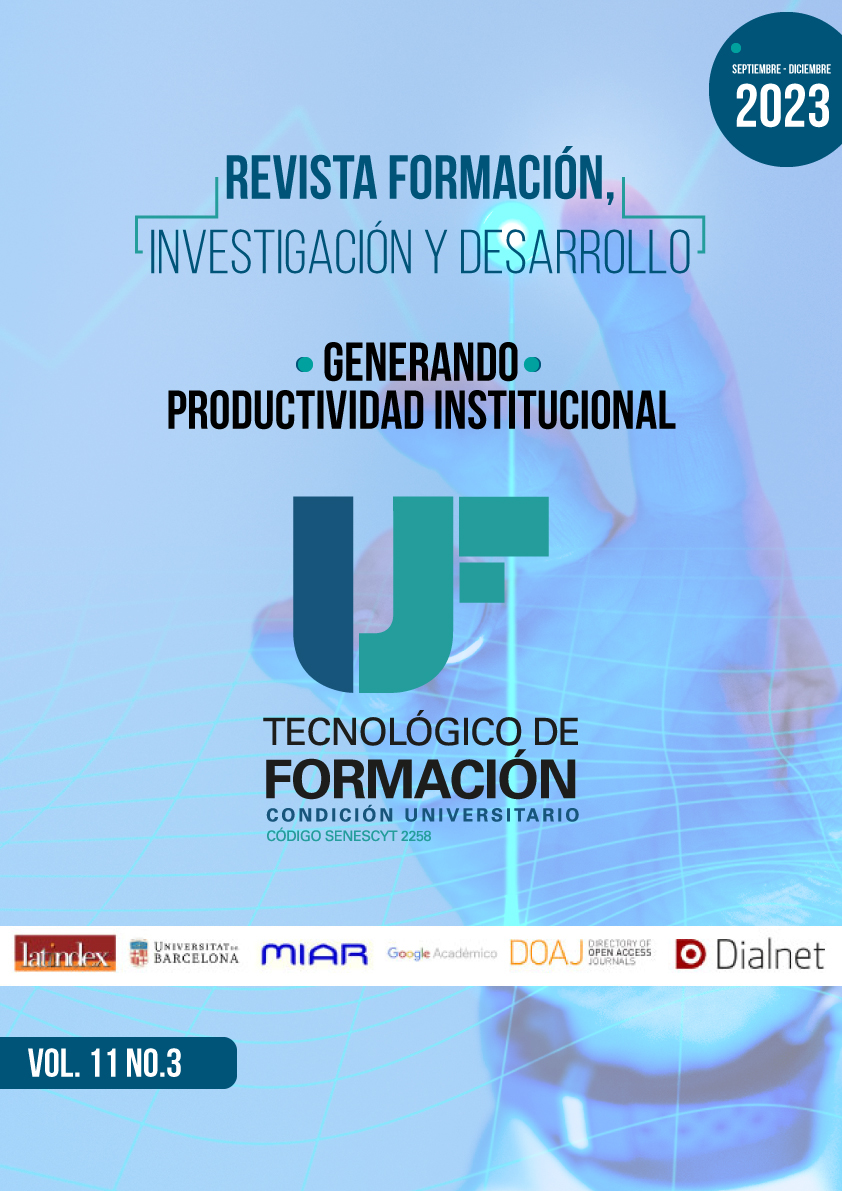Family Functionality in Care of Children with Sensory Disability
Main Article Content
Abstract
This paper analyzes the functionality of the family in the care of children with auditory sensory disabilities at the Huertos de los Olivos Foundation, located in the Guayaquil canton. It is recognized that the family plays a fundamental role in this problem, which even extends to the school environment. The objective is to understand the situation and contribute to finding joint solutions for both families and children with sensory disabilities. the study was based on the humanist paradigm and used a mixed methodology with a descriptive approach and cross-sectional design. A sample of 10 children with auditory sensory impairment was examined through observation, semi-structured interviews and the application of tools such as FF-SIL and family APGAR. The results revealed that these children come from dysfunctional families that do not provide adequate attention to their needs. It is concluded that psycho-emotional, family, communication and educational factors play a crucial role in the development of personal and psychosocial skills in children with auditory sensory disabilities. This research underscores the importance of addressing family functionality to improve the health and well-being of these children.
Article Details

This work is licensed under a Creative Commons Attribution-NonCommercial-ShareAlike 4.0 International License.
Este trabajo tiene licencia DE Atribución/Reconocimiento-NoComercial-CompartirIgual 4.0 Internacional. CC BY-NC-SA 4.0.
How to Cite
References
Asociacion Española de Pediatría. (17 de abril de 2014). AEP. Obtenido de AEP:https://enfamilia.aeped.es/edades-etapas/padres-adolescentes-como-mejorar-su-relacion
Benitez, M. (2017). La familia: Desde lo tradicional a lo discutible. Revista Novedades en Población, 13(26), 58-68.
Carrascosa, J. (2015). LA DISCAPACIDAD AUDITIVA. PRINCIPALES MODELOS Y AYUDAS TÉCNICAS. Revista Internacional de Apoyo a la Inclusión, Logopedia, Sociedad y Multiculturalidad., 1(2), 101-113.
Cruzat, A. (1 de noviembre de 2007). Medwave. Obtenido de Medwave: https://www.medwave.cl/puestadia/congresos/934.html
De los Angeles, Y., Campoverde, A., y Idrobo, J. (2019). Importancia entre la comunicación padres e hijos y su influencia en el rendimiento académico en estudiantes de bachillerato. Polo del Conocimiento, 4(5).
Florencia, M. (9 de mayo de 2021). La Nacion. Obtenido de La Nacion: https://lanacion.com.ec/consejos-para-padres-de-ninos-sordos/
Fundacion Saldarriaga Concha. (29 de julio de 2021). Fundacion Saldarriaga. Obtenido de Fundacion Saldarriaga: https://www.saldarriagaconcha.org/familia-y-el-desarrollo-dellenguaje-de-las-ninas-y-los-ninos-sordos/
Garcia, A., y Martinez, V. (2009). LA DISCIPLINA FAMILIAR. INFAD Revista de Psicologia, 2(1), 473-484.
Gonzalez, B., Aguirre , E., y Vaca, S. (2010). INTERACCIÓN FAMILIA-ESCUELA. ANÁLISIS DE CONTENIDO SOBRE EL DISCURSO DE DOCENTES Y FAMILIA. Revista Española de Orientación y Psicopedagogía, 21(2), 320-334.
Ministerio de Salud Publica (MSP). (3 de diciembre de 2022). Gobierno del Ecuador. Obtenido de Gobierno del Ecuador: https://www.salud.gob.ec/ecuador-avanza-hacia-un-procesoinclusivo-y-de-reduccion-de-las-desigualdades-para-personas-con-discapacidad/
Minuchin, S. (2003). FAMILIAS Y TERAPIA FAMILIAR. Barcelona: Editorial Gedisa, S.A.
Organizacion de Naciones Unidas (ONU). (15 de mayo de 2017). Noticias ONU. Obtenido de Noticias ONU: https://news.un.org/es/story/2017/05/1378891
Organizacion Mundial de la Salud (OMS). (27 de febrero de 2023). Organizacion Mundial de la Salud. Obtenido de Organizacion Mundial de la Salud: https://www.who.int/es/news-room/factsheets/detail/deafness-and-hearing-loss
Ortega, T., De la Cuesta, D., y Días, C. (1999). PROPUESTA DE UN INSTRUMENTO PARA LA APLICACIÓN DEL PROCESO. Revista Cubana Enfermer, 15(3), 164-168.
Pose, E. (4 de septiembre de 2023). NeuroClass. Obtenido de NeuroClass: https://neuroclass.com/terapia-familiar-enfoque-de-virginia-satir
Reyes, S., y Oyola, M. (2022). Funcionalidad familiar y conductas de riesgo en estudiantes universitarios de ciencias de la salud. Comuni@cción, 13(2), 127-137.
Satir, V. (2002). Nuevas Relaciones Humanas en el Nucleo Familiar. Mexico D.F: Pax México.
Siguenza, W., Buñay, R., y Guamán, M. (2017). Funcionamiento familiar real e ideal según el modelo Circumplejo de Olson. MASKANA, 8(Esp.), 77-85.
Suarez, M., y Alcalá, M. (2014). APGAR FAMILIAR: UNA HERRAMIENTA PARA DETECTAR DISFUNCIÓN FAMILIAR. Revista Médica La Paz, 20(1), 53-57.
Vargas, J., y Joselina , E. (2023). La dinámica de la familia y la diferenciación. Alternativas en Psicología(50), 133-159.

